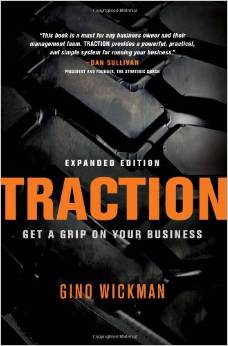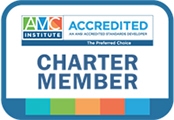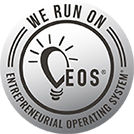 Traction by Gino Wickman: Describes “The Entrepreneurial Operating System (EOS)” that is a very practical method for achieving success in your organization. The author provides templates to assist in implementing EOS and the secrets to strengthening the six key components of your business:
Traction by Gino Wickman: Describes “The Entrepreneurial Operating System (EOS)” that is a very practical method for achieving success in your organization. The author provides templates to assist in implementing EOS and the secrets to strengthening the six key components of your business:
1. Vision
2. People
3. Data
4. Issues
5. Process
6. Traction
Follow #Traction and search for Gino Wickman on Twitter to join the conversation.

How to Hire A-Players by Eric Herrenkohl provides very practical advice on committing more time to finding and hiring the best talent, or “A-Players.” The book not only provides great insight (for example stop spending time trying to turn poor performers into A Players), but also many easy-to-follow principles in building and retaining top talent.
Follow @EricHerrenkohl on Twitter

Profitable Growth by Ram Charan spells out how to make profitable growth part of everyone’s job description. Charan helps you understand that singles and doubles are as valuable to a company’s growth as are home runs. The book provides practical steps that an organization can implement to address issues such as, “how to tell good growth from bad growth," as well as “accelerating profitable revenue growth through revenue productivity.” As Charan puts it the book provides “10 tools you can use Monday morning”.

The Carpenter by Jon Gordon tells a story of one man’s journey to find strategies for success for his company, and along the way finds strategies that help make him a better person. Gordon asks, “What legacy will you have left? Years from now people will be telling stories about you, and you must ask yourself what kind of stories you want them to tell.” One of the themes is becoming a “craftsman/craftswomen” that will help you to not only build a better business, but will help you grow your business without a real marketing plan.
Follow @JonGordon11 on Twitter

A More Beautiful Question by Warren Berger describes that one of the most powerful forces for igniting change in business, and in our daily lives, is the simple process of questioning. Berger points out that since questioning is a starting point for innovation, how can companies encourage and exploit it. Why is it that as children we ask many more questions than we do as adults? With the constant and rapid pace of change we all deal with on a daily basis, as leaders we need to be spending less time doing the same thing we have been doing, and more time questioning.
Follow Warren Berger, @GlimmerGuy, on Twitter




